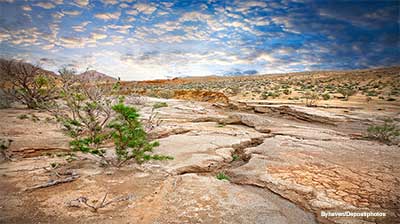FAQs about Water Pollution and Shortage

8. What are oligotrophization and eutrophication of lakes?
When a lake or a reservoir is low in nutrients it has clear waters, it allows a great penetration of light, which prevents an abundant growth of algae and animal species (oligotrophic waters).
As it accumulates nutrients, the lake becomes eutrophic. The algae begin to reproduce in important quantities, which results in the water becoming cloudy. When the algae and other species decompose, after completing their life cycle, oxygen is consumed from the water due to bacterial activity. This process, called eutrophication, affects the reproduction of fish and other species. In some cases, anaerobic putrefaction occurs, the waters become cloudy and become inadequate for human consumption. In some ecosystems, such as lakes, the main factor in eutrophication is phosphate.
FAQs about Pollution and water shortage
Updated and extended in August 2021
Pollution
1. What is the hydrosphere?
2. Why is water important?
3. What is water pollution?
4. What are the main water pollutants?
5. What diseases does water pollution transmit?
6. Which are the countries that best manage their waters?
7. What should be done to keep the waters clean?
8. What are oligotrophization and eutrophication of lakes?
Shortage
9. What is water scarcity?
10. What are the causes of water scarcity?
11. What is water stress, periodic scarcity and water scarcity?
12. Can we finish drinking water on the planet?
13. What are the cities with the greatest water shortage?
14. Could wastewater be used to solve the water shortage?
15. Why is not the water in the seas desalinated?
.
Sources
United Nations. Global Issues. Water. https://www.un.org/en/global-issues/water
United Nations. UN-Water. Water Scarcity. https://www.unwater.org/water-facts/scarcity/
UNESCO. Is wastewater the new black gold? 21/03/2017. https://en.unesco.org/news/wastewater-new-black-gold
UNESCO. Water Scarcity and Quality. https://en.unesco.org/themes/water-security/hydrology/water-scarcity-and-quality
Wikipedia. Water scarcity. https://en.wikipedia.org/wiki/Water_scarcity
Other sections of Water Pollution and Shortage

Our planet could have been called “Water” instead of Earth, because of the immense amount of the vital liquid that it houses. For something is blue and not ocher, although the atmosphere also helps paint that wonderful tone…
You can also see it in…
Infographics

Photo Gallery.

Video Gallery


